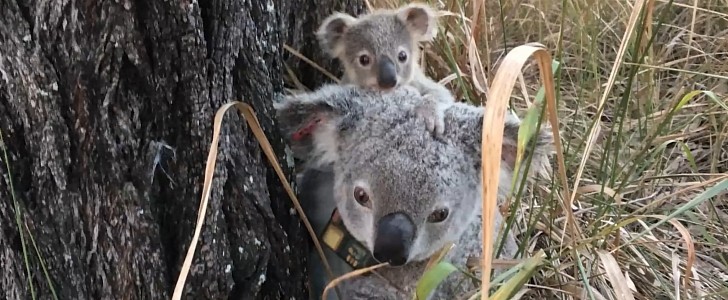The extreme bushfires of 2019 and 2020 have had a huge impact on wildlife in Australia, decimating many species of animals and leaving the land barren and the habitat inhospitable. Koalas in the region have also been among the ones that were severely affected, being forced to see their forests destroyed and their food sources drastically diminished. But several organizations are now teaming up trying to make things better, and Dendra Systems is one of them, deploying its drones to create green corridors and recover their habitat.
According to WWF (World Wide Fund) Australia, up to 19 million hectares (47 million acres) were scorched in the 2019-2020 fires, which impacted around three billion animals. In a collaborative effort to restore the ecosystems, the country's World Wide Fund for Nature teamed up with Australia’s Government and a few other organizations, and Dendra Systems is one of them.
The U.K.-based company specializes in reforestation technology and has agreed to send its aerial seeding platform to spread millions of seeds and create a koala corridor. Dendra’s drones have dispersed a seed mix of 40 plant species such as native grasses, shade trees like blue gums (a.k.a. koala caviar), ironbarks, acacias, and melaleucas. Each drone can carry around 700 kg (1,543 lb) per day, which, according to Susan Graham, Dendra Systems CEO, is the weight of two polar bears. And with the drones being able to fly in a swarm, Dendra can plant up to a ton and a half of seed every day.
The first phase of the restoration included eleven hectares on the Turner Family Foundation property at Hidden Vale, which is located 76 km (47 miles) of Brisbane. While not all seeds will survive, estimates say they should generate around 15,000 trees that will become home for the 45 koalas identified on the property.
Drone seeding is a relatively new technology used in the region but if this experiment proves successful, it will be implemented in other areas as well, as it is more efficient than traditional methods such as plowing and then planting the seeds, which would take too long. According to Tanya Pritchard, Landscape Restoration Project Manager for WWF Australia, drone seeding could be a turning point in koala recovery. WWF hopes to double the number of koalas in eastern Australia by 2050.
The U.K.-based company specializes in reforestation technology and has agreed to send its aerial seeding platform to spread millions of seeds and create a koala corridor. Dendra’s drones have dispersed a seed mix of 40 plant species such as native grasses, shade trees like blue gums (a.k.a. koala caviar), ironbarks, acacias, and melaleucas. Each drone can carry around 700 kg (1,543 lb) per day, which, according to Susan Graham, Dendra Systems CEO, is the weight of two polar bears. And with the drones being able to fly in a swarm, Dendra can plant up to a ton and a half of seed every day.
The first phase of the restoration included eleven hectares on the Turner Family Foundation property at Hidden Vale, which is located 76 km (47 miles) of Brisbane. While not all seeds will survive, estimates say they should generate around 15,000 trees that will become home for the 45 koalas identified on the property.
Drone seeding is a relatively new technology used in the region but if this experiment proves successful, it will be implemented in other areas as well, as it is more efficient than traditional methods such as plowing and then planting the seeds, which would take too long. According to Tanya Pritchard, Landscape Restoration Project Manager for WWF Australia, drone seeding could be a turning point in koala recovery. WWF hopes to double the number of koalas in eastern Australia by 2050.









